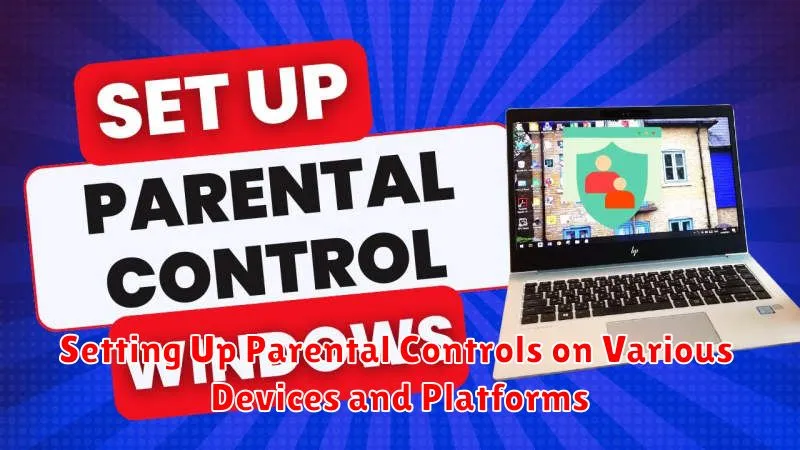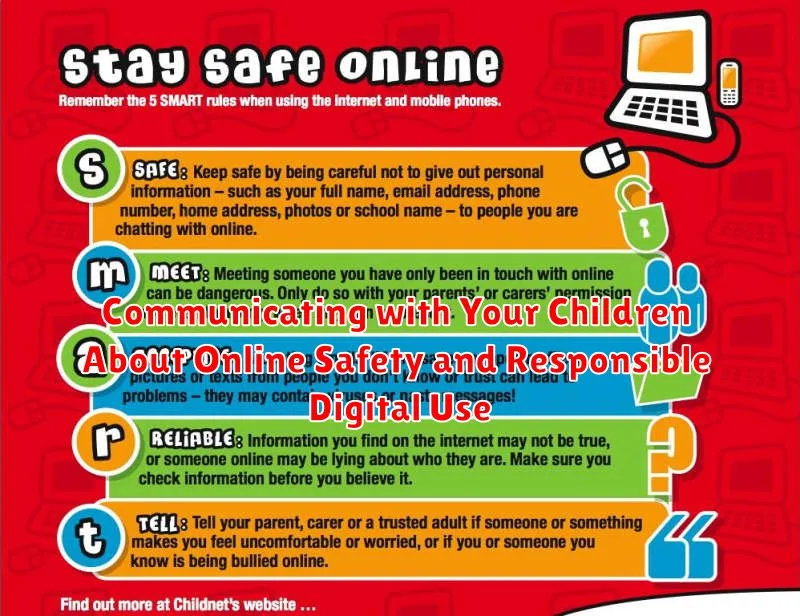In today’s digitally interconnected world, ensuring the online safety of our children is paramount. With the pervasive nature of the internet and the ease of access to potentially harmful content, parental controls are no longer a luxury but a necessity. This comprehensive guide provides parents and guardians with a practical roadmap to navigate the complexities of setting up and effectively utilizing various parental control tools and techniques. Whether you’re concerned about exposure to inappropriate content, cyberbullying, online predators, or excessive screen time, understanding and implementing parental controls is the first step in creating a safer online experience for your children.
This guide will explore a wide array of parental control options, from built-in operating system features to dedicated software solutions and router-level configurations. We’ll cover strategies for different age groups and address platform-specific considerations, including computers, smartphones, tablets, and gaming consoles. We will delve into the intricacies of content filtering, screen time management, app usage monitoring, and communication controls, equipping you with the knowledge and resources needed to establish a robust online safety net for your children. By proactively embracing parental controls, you can empower your children to explore the digital world safely and responsibly.
Why Parental Controls Are Essential in Today’s Digital Age
In today’s interconnected world, children are exposed to the internet earlier than ever before. While the internet offers incredible educational and social opportunities, it also presents potential risks. Parental controls provide a crucial layer of protection, helping safeguard children from inappropriate content, online predators, and cyberbullying.
Protecting young minds is paramount. Children may inadvertently stumble upon explicit content, violent material, or encounter individuals with harmful intentions. Parental controls act as a safeguard, filtering out inappropriate websites and restricting access to potentially dangerous online communities.
Beyond content filtering, parental controls help manage screen time. Excessive screen time can negatively impact sleep patterns, academic performance, and social development. These tools allow parents to set healthy limits, ensuring a balanced approach to technology usage.
Finally, parental controls offer parents peace of mind. Knowing that their children are navigating the digital world in a safer environment allows parents to encourage online exploration while minimizing potential harm.
Exploring Different Types of Parental Control Features
Parental control software offers a range of features designed to create a safer online environment for children. Understanding these features helps parents choose the best protection.
Website Filtering is a core feature, allowing parents to block access to inappropriate websites based on categories like gambling, pornography, or violence. Some solutions offer customizable whitelists and blacklists for greater control.
Time Limits and Scheduling features help manage screen time by setting daily or weekly limits for device usage or specific apps. This helps prevent excessive screen time and encourages healthy digital habits.
App Management features provide control over which apps children can download and use. Parents can restrict app stores, block specific apps, or even monitor app usage statistics.
Search Monitoring enables parents to track their child’s search history. This helps identify potential risks and facilitate conversations about online safety.
Communication Monitoring in some parental control software can track messages, emails, and social media interactions. This is a more advanced feature and should be used with consideration for the child’s privacy.
Location Tracking is sometimes included, particularly on mobile devices, allowing parents to know their child’s location. This feature can be helpful for safety but also raises privacy considerations.
Setting Up Parental Controls on Various Devices and Platforms

Implementing parental controls varies across devices and operating systems. This section provides a general overview of how to access these settings on common platforms.
Computers (Windows & macOS)
Windows offers built-in family safety features accessible through the system settings. These allow for content filtering, screen time limits, and activity reporting. macOS provides similar functionality through Screen Time in System Preferences, allowing for control over app usage and website access.
Mobile Devices (iOS & Android)
On iOS devices, restrictions and content filtering can be configured within Screen Time settings. Android devices offer Family Link, an app that allows parents to manage apps, set time limits, and locate their child’s device. Individual apps on both platforms may also offer their own parental control options.
Game Consoles
Most popular game consoles (Xbox, PlayStation, Nintendo Switch) provide robust parental control settings. These usually allow for restrictions on game ratings, online interactions, and in-game purchases. Refer to your console’s documentation for specific instructions on activating these features.
Home Routers
Consider configuring parental controls at the router level for network-wide protection. This can provide a consistent layer of filtering and control across all connected devices. Features vary by router manufacturer, so consult your router’s documentation for specific instructions.
Customizing Parental Control Settings to Fit Your Family’s Needs
One size doesn’t fit all when it comes to online safety. Customizing parental control settings allows you to tailor the level of protection to each child’s age, maturity level, and individual needs.
Consider factors such as the types of content you want to block (e.g., violence, explicit language, gambling), time limits for specific apps or websites, and access restrictions for social media platforms.
Many parental control systems offer filtering options based on age categories or specific keywords. You can also often create custom filters to address unique concerns. For example, you may wish to restrict access to online shopping or certain gaming communities.
Review and adjust these settings regularly as your children grow and their online activities evolve. This ongoing process ensures the controls remain relevant and effective in providing a safe online environment.
Managing Screen Time and App Usage with Parental Controls
Excessive screen time can negatively impact children’s sleep, academic performance, and overall well-being. Parental controls offer effective tools to manage and balance their digital engagement.
Many parental control systems allow you to set daily or weekly time limits for specific apps or device usage as a whole. You can allocate specific time slots for educational apps, entertainment, and social media, ensuring a healthy balance. Some platforms even offer the ability to schedule “downtime” periods where access is completely restricted, promoting family time and healthy sleep habits.
App blocking and usage monitoring features provide further control. You can restrict access to inappropriate apps or games based on age ratings or content. Monitoring features allow you to track which apps are being used and for how long, giving you insights into your child’s digital habits.
By proactively managing screen time and app usage, you can help your children develop healthy digital habits and ensure they have a balanced lifestyle.
Monitoring Online Activity and Protecting Your Child’s Privacy
Monitoring your child’s online activity is a crucial aspect of digital parenting. While respecting their privacy, it’s important to be aware of their online interactions to ensure their safety and well-being. Several parental control tools offer activity logging and reporting features. These features can provide insights into websites visited, apps used, and search terms entered.
Protecting your child’s privacy is paramount. Educate them about the importance of not sharing personal information online, such as their full name, address, phone number, or school. Explain the risks associated with interacting with strangers online and the potential dangers of sharing private information.
Many parental control solutions offer content filtering options that block access to inappropriate websites and content. These filters can be customized based on age appropriateness and your family’s values. Additionally, some tools allow you to manage social media access and monitor their interactions on these platforms.
Communicating with Your Children About Online Safety and Responsible Digital Use

While parental controls offer a strong layer of protection, open communication with your children about online safety is crucial. Talking to your children about potential online risks and responsible digital habits creates a foundation of trust and understanding.
Explain the importance of privacy and the potential dangers of sharing personal information online. Discuss appropriate online behavior, including interacting respectfully with others and avoiding cyberbullying. Emphasize the permanence of online content and the potential consequences of posting inappropriate material.
Encourage your children to come to you if they encounter anything unsettling or uncomfortable online. Creating a safe space for dialogue empowers them to seek guidance when needed. Regularly revisit these conversations as your children grow and their online interactions evolve.
Education and open communication are as important as any technical tool in safeguarding your children’s digital well-being. By fostering a culture of online safety within your family, you empower your children to navigate the digital world responsibly and confidently.

